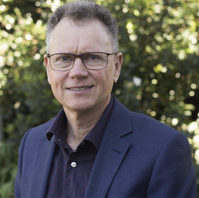What do they say about me?

Godfrey Duncan ed Eternal Springs. Norm S.D. Esdon p138
Matthew16:13-19
Have you ever wondered what people think of you?
I guess many of us do from time to time.
‘Matthew’ writes of Jesus having one of those moments. He asks the disciples who were with him “Who do you say that I am?”
It was a reasonable question it seems to me, given they were in a part of the world that was a focus of imperial power and the worship of what we call pagan gods, Pan being the local deity. It was a dangerous place for rebellious Jews!
Perhaps Jesus wants to know why this group of people were following him and putting their lives in danger. That’s a reasonable thing to want to know when the region has an abundance of competing ideologies, religions and leaders.
In this portion of the story, Jesus, and his friends, as told in Matthew’s gospel, reach the northern most city of their travels and turn to begin making their way to Jerusalem. Caesarea Philipai was a beautiful place by all accounts, plentiful water and grand buildings constructed as a monument to Caesar Augustus by the Tetrarch Philip, (son of Herod the Great.
Perhaps Jesus was in a reflective mood after all the busyness of preaching, healing and confronting the authorities that had been going on. That is certainly the picture the writer of Matthew paints! Or perhaps he was feeling a bit wobbly and wanted to know how others were perceiving him in the face of multiple religious groups and the power of Rome.
Matthew16:13-19 tells of a pivotal moment in the ministry of Jesus. First, Jesus asks his disciples
"Who do people say the Son of Man is?"
The response that the ’son of man’ is thought of as John the Baptist, or Eliajah orJeremiah or one of the prophets. This is important for Matthew as it enables later him to locate Jesus in the line of those faithful ancestors who have gone before and done their best to brings God’s justice, peace, and love to the people. It would have been reassuring response for Matthew’s audience who were struggling, in their own time, for their identity, and their points of distinctiveness from all the other groups.
The writer chose the backdrop for the question well, I think, as the city was steeped in pagan worship and under Roman rule, and so enables Jesus’ identity to be named very differently. Caesarea Philipai was a place of power and empire, a physical manifestation of the oppressive social structures that shaped everyday life. By engaging his disciples here, in the shadow of this imperial and religious domination, Matthew’s Jesus sets the stage for a big conversation about what he was trying to do with his life, and what he was teaching and preaching about.
Caesarea Philippi as I have said, was a symbol of Roman strength, political control, and theological conquest. Under the rule of Herod Philip, the city embodied the imperial cult, wherein emperors were venerated as divine gods. For the disciples, this would have been a place that resonated with the tension between their Jewish identity and the foreign dominion imposed upon them. It was a time when public declarations of faith were risky and often led to persecution. So, Jesus's next question was even more risky than the first under the circumstances,
"Who do you say that I am?".
He really could be wondering why they have left settled lives and family to wander about the country with him.
Jesus is asking more than what people think about him or believe; he is probing the disciples' commitment to what he thinks he stands for: justice, advocacy, and action in the face of systemic oppression.
He seems to be testing their commitment to stand with him in opposition to the imperial court of Philip and Roman rule.
When Peter responds, "You are the Messiah, the Son of the living God," Peter is articulating a vision of hope that directly confronts the idolatry and false security offered by the regional authorities.
To call Jesus "the Messiah," as Peter does in Matthew’s story, is not simply a spiritual affirmation, it is a bold, counter-cultural proclamation that challenges the existing order: both the Roman imperial order and the Jewish temple order. It sets one leader in opposition to another.
Remember that the writer, Matthew, was committing to paper his interpretation of the Jesus story in the 80’s or 90s, according to scholars. So, the Temple had fallen, and both Jewish authorities and Roman authorities were reasserting power and resetting expectations. This story was one of challenge to those authorities, both in Jesus’ time and later at the time Matthew was writing. It seems clearly to be asking “Where do you stand? Who do stand with?” “What are you prepared to do?”
Peter’s declaration interprets Jesus for us, as it did for Matthew’s audience. His moment of insight challenges us consider where we stand in our own time over 2000 years later, how committed we are to the way of Jesus, and it challenges us to think about the priorities of our life as a result.
It is a bit scary, at the moment, as we see various leaders seeming to demand people make decisions to stand with them in opposition to others. Leaders who set up a them and us mindset of fear
We see it within the political landscape of the USA,
We see it in the geo-political framework of the middle east: Israel, Gaza, and Iran
We see it in the attitude of Russia to the Ukraine
We see it in parts of Africa
We see it here at home with the marches and utterances of Brian Tamaki who calls himself a Christian, a follower of Jesus, and claims God speaks to him, and yet demands his followers rip up the flags, the symbols of identity, of groups he declares are ‘other’: satanic.
Who do we stand with? Do we stand with the systems of inequality, consumerism, dehumanisation and environmental degradation that assert dominance over our world, or do we stand with those who disrupt oppressive systems and call us into transformative inclusive love?
Where we think we stand could be perceived by others quite differently!
What we say we stand for needs to be backed up by what we do, for our position to have integrity the decisions and actions we are prepared to take need to show our commitment to that inclusive generous love, that willingness to oppose those who trade in fear.
It’s not always an easy choice.
People we know and like make different choices from us.
But when we do choose The Jesus Way, we do not stand alone in the place we have chosen. We will have companions who stand with us, who will keep us accountable to the life giving energy that comes with the choice, and who will support us when we falter and doubt as we all do from time to time.
Thank goodness for this!
Peter, the ‘Rock’ (another great image for the solid foundation upon which we are invited to stand), the one upon whom ‘I will build my church’. Rocks and firm foundations go together easily for us and are reassuring. Our companions are the rocks among whom we stand.
Whether or not Jesus would have actually said these words, a church that stands firm against all that would destroy the vision of heaven here on earth, all that would destroy peace through justice, all that would work against healing, freedom, and economic security, gets a yes from me. It is a church I want to be aligned with; with a leader I am prepared to follow.
In our current socio-political times, to say yes to the way of Jesus means embodying the radical inclusivity of Christ, who welcomed the outsider, healed the broken, and prioritized human dignity above institutional power.
A church such as this must be grounded in prophetic action, speaking truth to power, and fostering reconciliation. This is the rock on which we stand: a firm vision of how the world could be.
As we reflect on this passage, let us ask ourselves: Who do we say Jesus is? Not in abstract words alone, but in the tangible ways we live out our faith.
Whether we know it or not, we answer Jesus’s question not with only with the words we speak, but through the way we live.
And this will be what people say about us!



.jpg)
